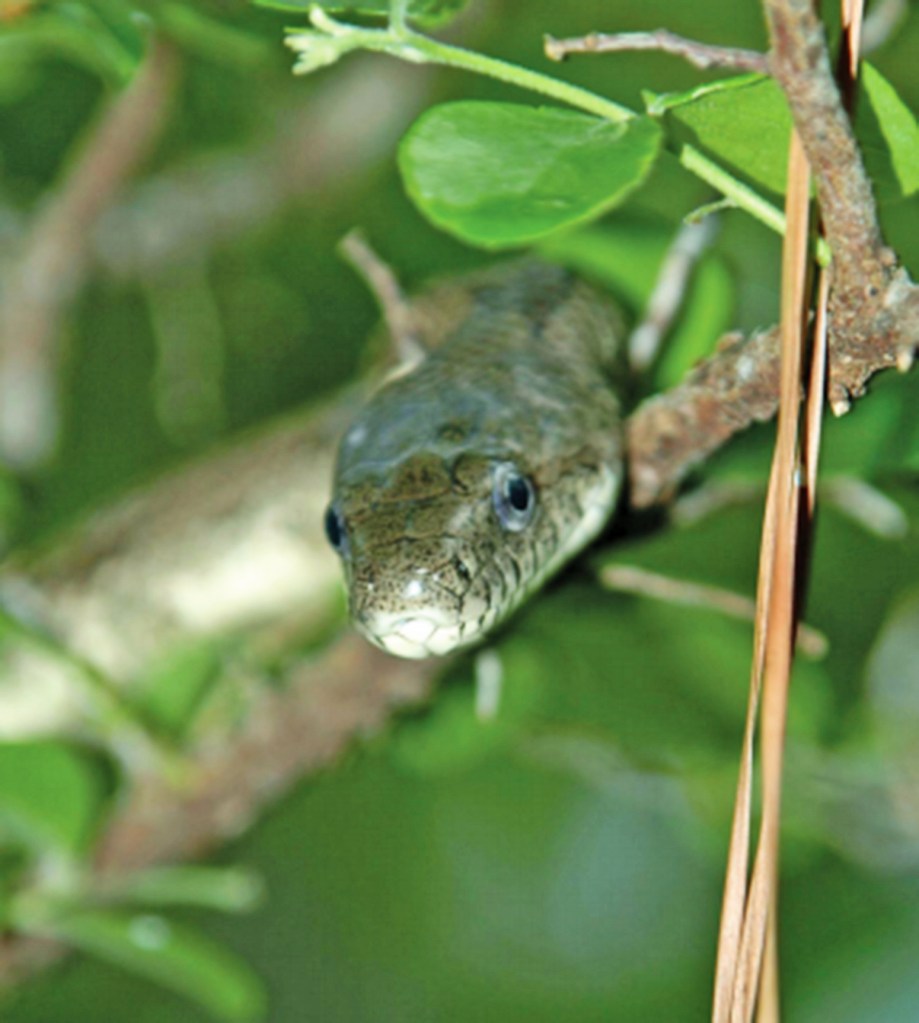THE GARDEN SPOT: Snakes live here, too
Published 12:00 pm Thursday, June 7, 2018

- Rat snakes are nonvenomous and beneficial snakes that feed on rodents. Unlike venomous snakes, they have an oval-shaped head and round pupils.
I always find the wide variety of reactions my clients have after snake sightings amusing.
Some are deathly afraid of them, others want to kill them and a select few like having them around to help manage the rodent population around barns and other buildings.
Like most wildlife, if you leave snakes alone, they will leave you alone. Regardless of your thoughts on snakes, it is important to understand how to identify the difference between a harmless, beneficial snake and a potentially dangerous venomous snake.
Believe it or not, snakes can be very beneficial. Each year, I find evidence that a rat snake or two has shed its skin in the shed behind my house. Guess what? I never see mice or rats in the area during the warm season when snakes are active.
Furthermore, some nonvenomous snakes such as the king snake are ophiophagous, meaning they actually hunt and eat other snakes.
Still, venomous snakes can be dangerous, especially if they are in an area where your children or pets frequent. We have about 40 species of snakes in Alabama, but only six are venomous. Out of these, you are only likely to encounter five — the diamondback rattlesnake, timber rattlesnake, pygmy rattlesnake, copperhead and cottonmouth. These snakes all belong to the pit viper group.
The sixth venomous snake is the coral snake, which is a relative of the cobra, and is found in the lower coastal plain, where it spends most of its time underground.
The best way to tell harmless snake from a venomous snake is to look at the head. Venomous pit vipers are going to have flat, triangular heads while other snakes are going to have an oval, elongated head. You can also look at their eyes. Pit vipers have vertical “cat-like” pupils, while other snakes will have a round pupil.
Common snakes
Below are some of the more common snakes you may encounter here in North Alabama:
• Timber Rattlesnake: Large, venomous snake common to sparsely settled forested areas. Feeds on rodents and occasional birds;
• Copperhead: Medium-sized venomous snake that prefers forested areas with rocky bluffs or abandoned farms. Like many snakes, the pattern is variable but usually tan to brown with darker cross bands. They feed on small mammals, frogs, lizards and insects. It is one of the most common venomous snakes in North Alabama;
• Cottonmouth: This is a larger, heavy-bodied venomous snake. Adults are variable in color, ranging from solid dark gray to black and tan with spots. They are commonly found in wetlands, ponds, rivers, and lakes statewide and feed on a variety of prey, including insects, fish, frogs, lizards and more. There are seven species of harmless water snakes often mistaken for cottonmouths;
• Black rat snake: This is a large, nonvenomous snake commonly found in rafters and trees and is sometimes known as a “chicken snake.” They are black with a lighter underside and are common in a variety of habitats. They feed on rodents and birds;
• Black racer: This long, slender nonvenomous snake is commonly found in open forests and field edges. Their color is plain black, and they will often quickly flee when approached; and
• Eastern garter snake: This is a small- to medium-sized nonvenomous snake, found in a variety of habitats across Alabama, including around homes and gardens. They are gray with three yellow stripes running down their back. They feed on a variety of small prey, including insects, small rodents and amphibians.
The best way to keep your home snake-free is to simply clean up around your yard. Any piles of firewood, lumber, rocks or unused equipment can make a great place for a snake to hunt for prey.
Long grass, weeds and untamed shrubs also make great snake habitat. Unfortunately, the varieties of snake repellents available have not been proven to be effective. Snakes are simply a fact of life in North Alabama, especially if you live in the country.
A publication, “Identification and Control of Snakes in Alabama,” can be found at https://bit.ly/2LjSn3m.
The Alabama Department of Conservation & Natural Resources also has a website on snakes at http://www.outdooralabama.com/reptiles/snakes.
— For information on topics related to the home and garden, contact any office of the Alabama Cooperative Extension System. The Limestone County Office is located at 1109 W. Market St. in Athens. Office hours are 8 a.m.–4:30 p.m. Monday through Friday. For more information, call 256-232-5510 or visit www.aces.edu.





